Calgary freedivers embrace vulnerability and community to conquer the ice
by Iris Young
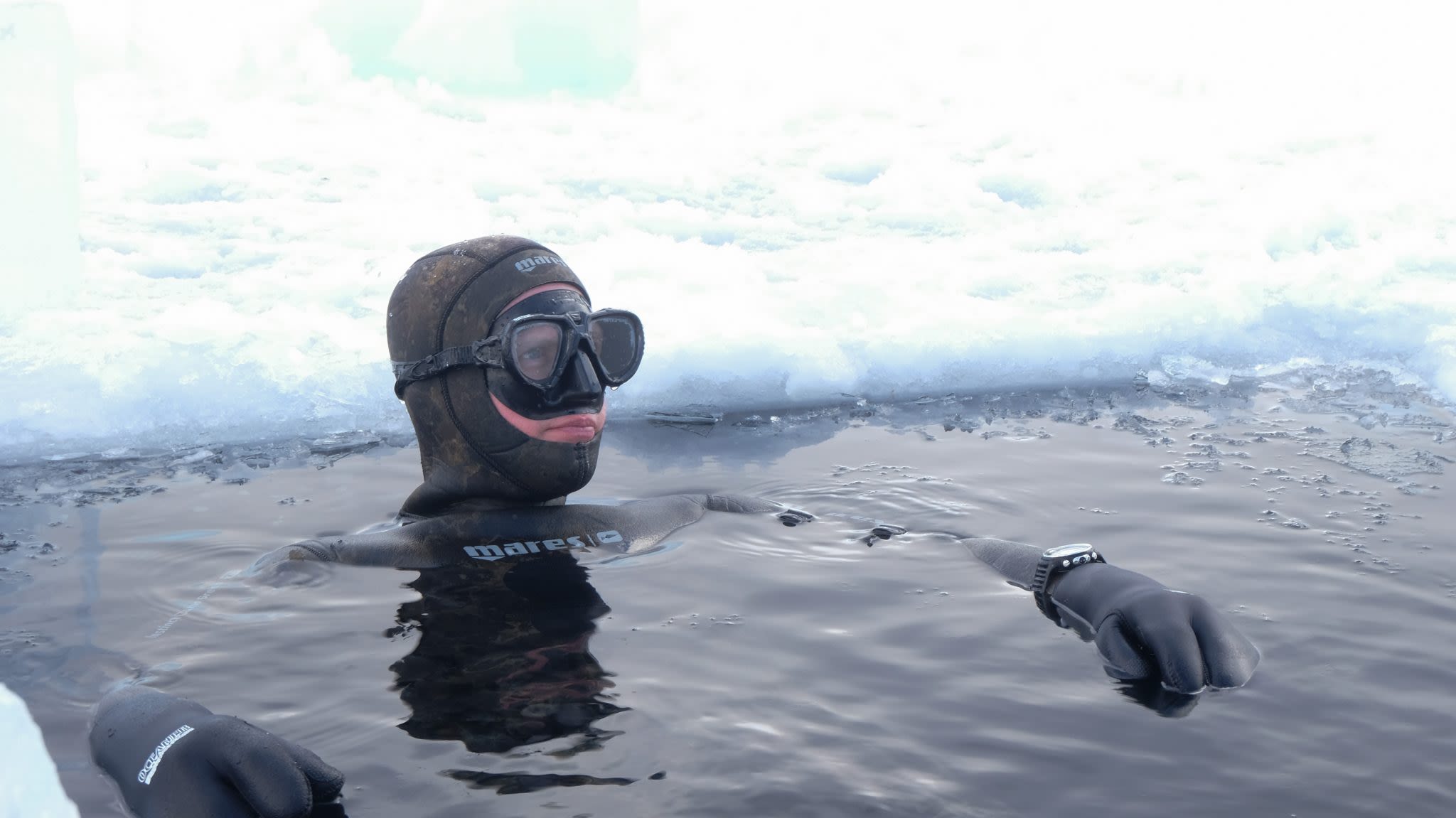
In high winter, the ice on Lake Minnewanka is thick and unyielding. A chainsaw coming to life, loud and visceral, soon cuts through the early morning quiet and, ultimately, the ice. The dark and frigid water beneath is uninviting—as is the freezing surface temperature hovering at -15 C on the weekend of January 28.
Yet there is a pervading sense of excitement as 18-inch blocks of ice are hauled out of the water. Diving lines, tents, and a perimeter are set up in short order and with impressive efficiency, despite the cold.
“You can tell, with a group like this, how everybody’s in a good mindset,” said Kyle Schole, a newly certified freediver on his first ice dive at Lake Minnewanka in Banff.
The link between freediving and mental wellness is well-documented. Research shows freediving athletes exhibit less stress and anxiety symptoms and have more self-confidence and inner control.
“Being in the water—I’ve been finding it’s really good for mental health. That’s one of the big things I get from it,” said Schole.
But as great as the mental health benefits are, so is the preparation. While freediving is a low-impact activity that anyone can do regardless of age, size, or fitness level, it still requires rigorous training. Techniques like duck diving (or diving down) and finning are essential. But these are only secondary to breath-hold training, which is the very essence of freediving.
Also known as apnea diving, freediving involves the temporary cessation of breath. To stay underwater for long periods, freedivers need to acclimatize to a certain level of oxygen deprivation and carbon dioxide saturation, as well as control their heart rate. When done correctly, this combination brings about a meditative state that freedivers aspire toward.
“When you get in the water, you forget to breathe. Once you control that, you’re fine,” said Olivier Aubin, one of the group’s more experienced divers.
When diving for depth, freedivers also need to equalize efficiently to relieve pressure in the middle ear and avoid injury—no small feat when diving in extreme cold.
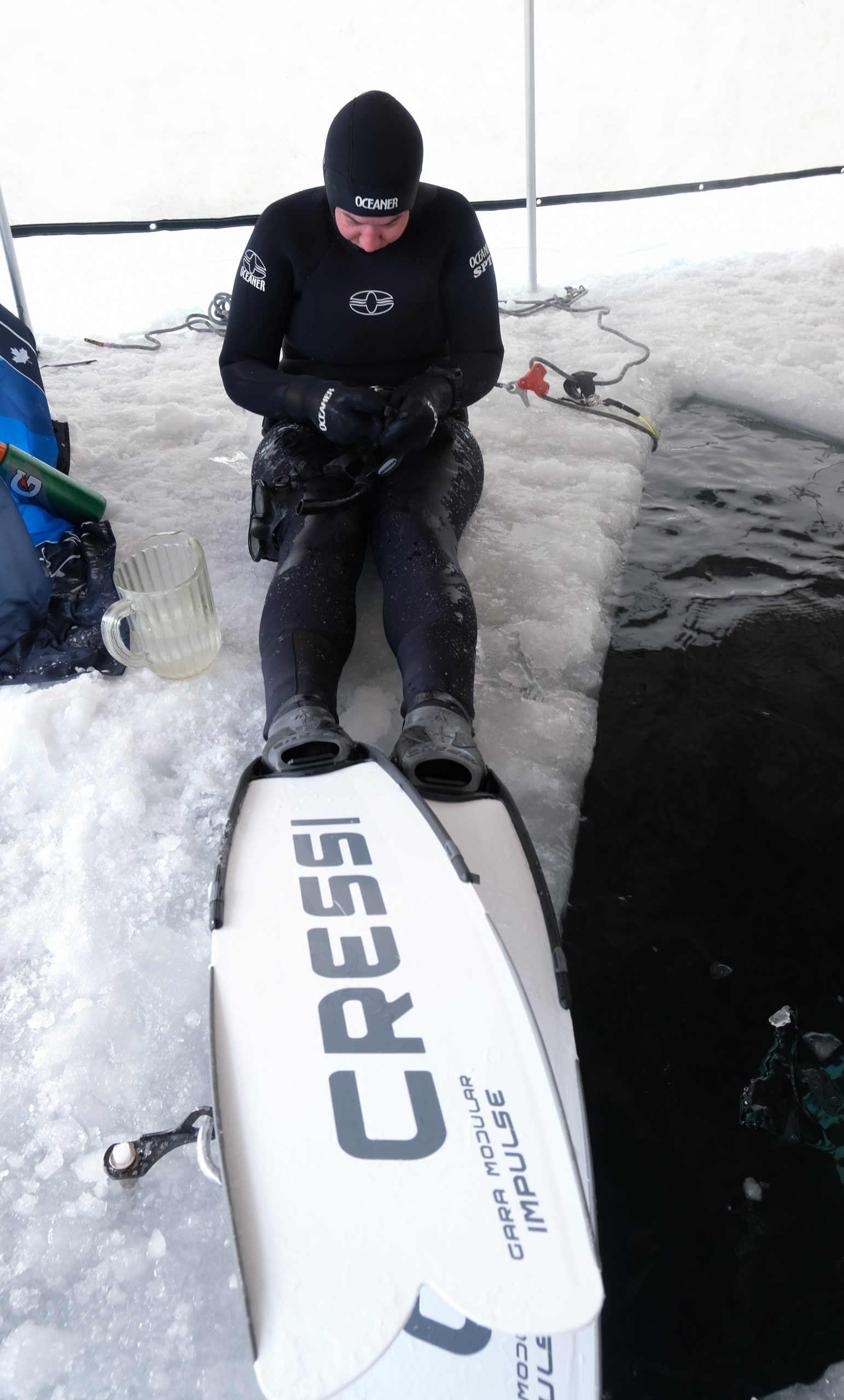
“The colder the water, the harder it is definitely,” Aubin said.
According to Sabrina Figliomeni, a scuba diving trainer at Calgary’s The Dive Shop, the key is to ease into it.
“When you get in the water for the first time, just hold your breath and plunge your face in the water—no mask—and see what it feels like,” said Figliomeni. “It tells your body it’s a little bit colder than usual. It kind of sets the stage and kicks in that mammalian dive reflex.”
It is this diving reflex that allows humans to spend time underwater. Submersion in cold water triggers a series of physiological responses: apnea, bradycardia or a slow-down in heart rate, and peripheral vascular resistance in which blood flow is redirected to essential organs like the brain and heart.
Indeed, it is a lot to unpack; however, such is the beauty of the human body that, with adequate training, it all comes together almost naturally. Though freediving is a highly personal activity, it is by no means a solo sport.
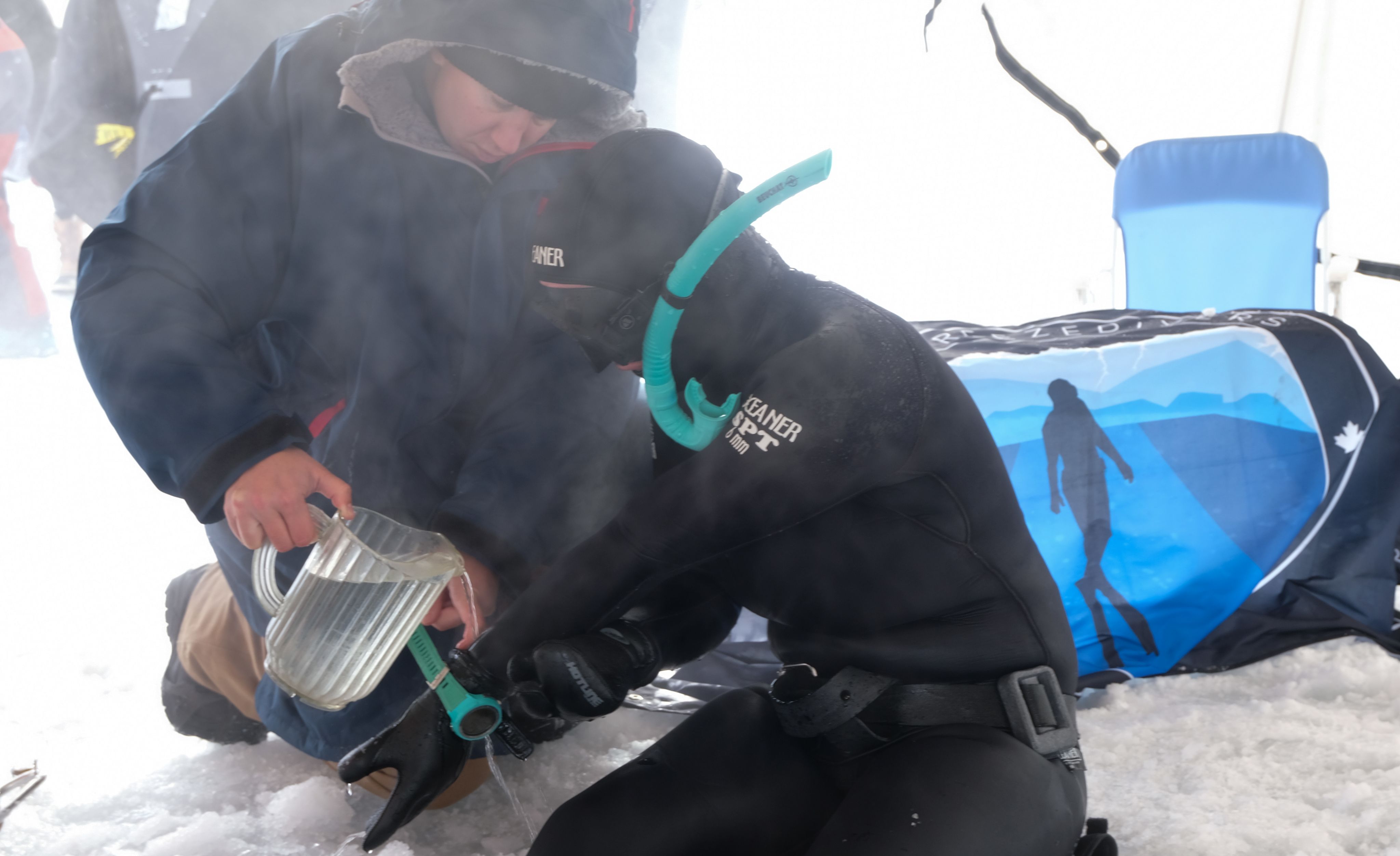
“You always have to train with a buddy if you’re going to be in the water,” said Schole.
The necessity comes from the not-uncommon danger that is shallow water blackout. Also known as hypoxia, it occurs when blood oxygen levels drop so low that the diver loses consciousness. When this happens, the body involuntarily draws in a breath, taking in water, which can be fatal without immediate rescue.
“If someone is diving, we have someone in the hole as safety,” said Figliomeni. “They’re either sitting in the water, face in the water, or belly-on-the-ice, hands ready to knock themselves in.”
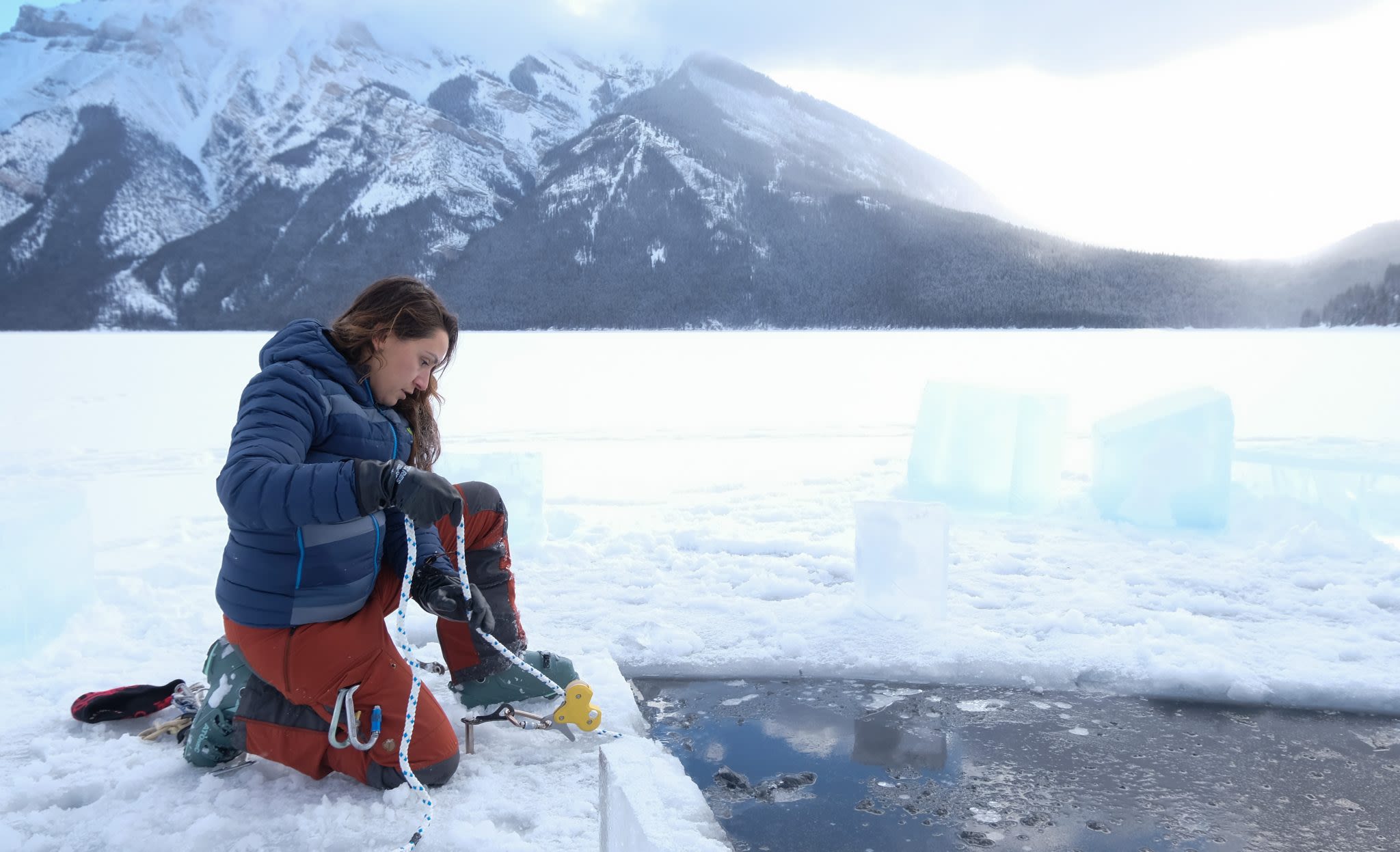
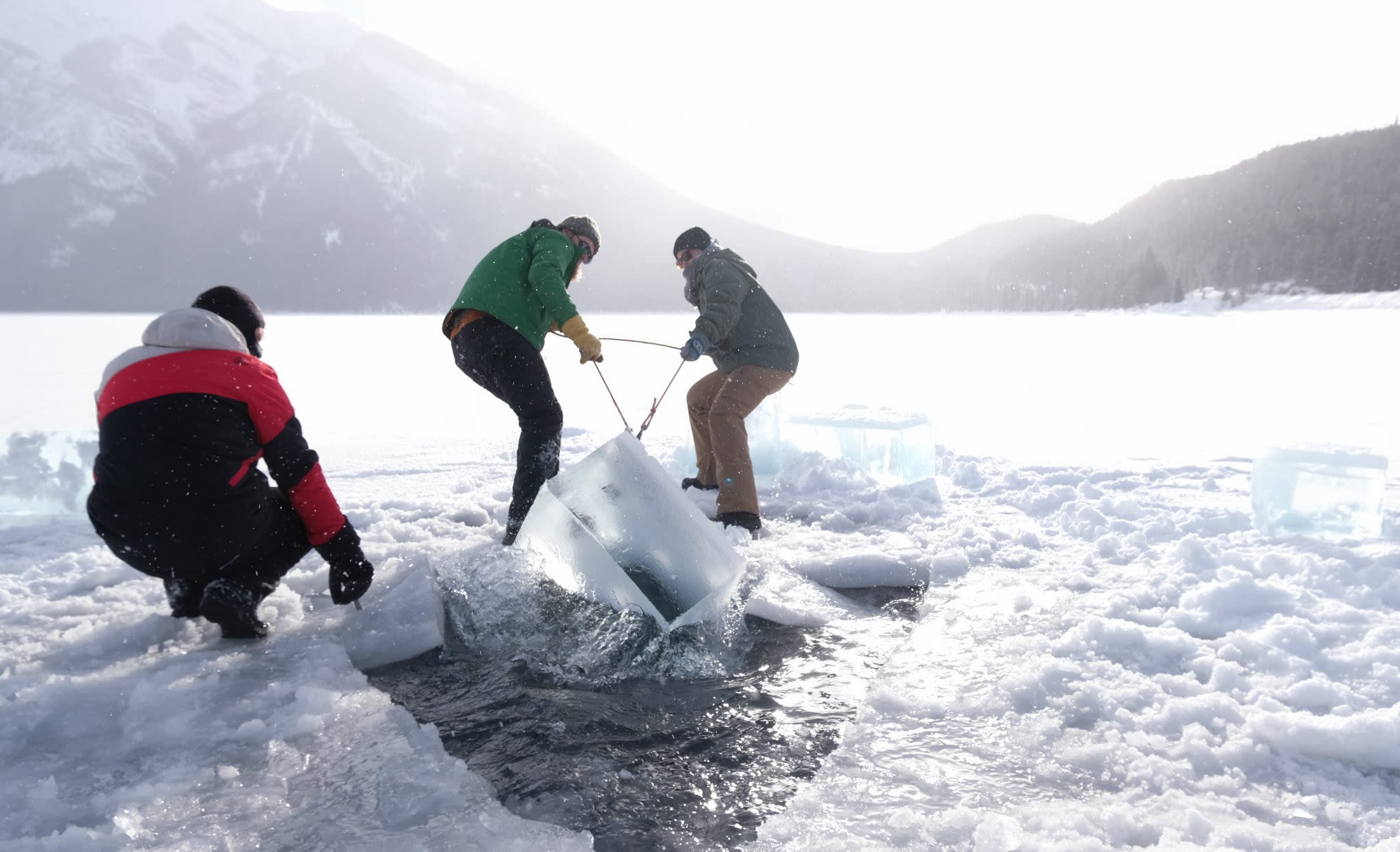

Ice diving also has the added hazard of poor visibility. For this reason, Figliomeni, who organizes these local ice diving events, is adamant that freedivers stay on the lines installed.
“We have two holes. Each hole has a downline with a weight on it. We will have a lanyard on each hole, [connected] onto the wrist,” said Figliomeni. “You need to stay on the line down there. If you’re going between the two holes, there is a line to pull yourself along.”
But even with these measures in place, the cold remains the most significant threat. To lessen exposure, freedivers wear open-cell neoprene wetsuits that are seven millimetres thick.
“You feel the chill, but it’s not going to hold the cold unless you sit there for a prolonged time,” said Teighan Fioritti, The Dive Shop’s freediving instructor.
For anyone feeling chilly, warm water is at the ready to warm up the extremities. There is also a sauna tent for anyone wanting to take a break.
“There are no Instagram points for staying in the water and being cold and miserable,” Figliomeni said.
For Angelique Lavigne, also freediving under the ice for the first time, there is comfort in community.
“There are all the right people in place. Everyone’s certified. Everyone’s used to cold water,” she said.
This sense of community is rare in the competitive world of freediving.
“It’s recreational freediving. It’s what I teach and what we primarily do here, mainly because we don’t have the depth for competition,” said Fioritti. “Here, it’s more fun to just have fun. And part of the fun is acknowledging the cold.”
“It’s a stressful scenario to put yourself into because it’s very intimidating to go under the ice, but you have a whole community and a small army of people here cheering you on,” she added. “The emotional support you get from the community is fabulous.”
